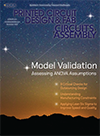News
Clinton, NY -- Indium has begun manufacturing wave solder fluxes in its European facility. The company hopes the added capability from its Milton Keynes, England, facility will improve customer service in the region.
The company produces a full line of wave solder fluxes, including no-clean, residue-free fluxes that accommodate Pb-Free and Sn/Pb processes.
The company produces a full line of wave solder fluxes, including no-clean, residue-free fluxes that accommodate Pb-Free and Sn/Pb processes.
Rochester, NY – EMA Design Automation and Ageus Solutions have joined forces to provide environmental compliance solutions from design through manufacturing.
“We’re adding the ability to supply the mechanical portion of RoHS/WEEE compliance,” said Manny Marcano, president and CEO of EMA. “Aligning forces with Ageus allows us to expand our Engineering Data Management (EDM) solution to cover the entire manufactured product, which supports the entire RoHS/WEEE directive.”
EDM allows product development teams to record, manage and report the design and development data used in the creation of manufactured products.
Ageus provides RoHS/WEEE consulting, assessment and process of mechanical components and drawings. The company also has a comprehensive recycling network in Europe.
“We’re adding the ability to supply the mechanical portion of RoHS/WEEE compliance,” said Manny Marcano, president and CEO of EMA. “Aligning forces with Ageus allows us to expand our Engineering Data Management (EDM) solution to cover the entire manufactured product, which supports the entire RoHS/WEEE directive.”
EDM allows product development teams to record, manage and report the design and development data used in the creation of manufactured products.
Ageus provides RoHS/WEEE consulting, assessment and process of mechanical components and drawings. The company also has a comprehensive recycling network in Europe.
“RoHS compliance should not be dominating the agenda of electronics companies,” said Bruce Calder, president of Ageus. “Our focus is to seamlessly integrate RoHS/WEEE compliance into engineering systems and business practices allowing electronics companies to keep their focus on the core business of designing, manufacturing and selling electronics products.”
Cupertino, CA -- Is Apple going to break up its relationship with Motorola to introduce its own iPhone in late 2006? The long-rumored product once again made headlines last week as analysts speculated on an upcoming product introduction.
Piper Jaffray analyst Gene Munster said there was a 75% chance that Apple would release an iPhone in the next 12 months. And over the weekend, JPMorgan analyst Johnny Chan told Barrons that Apple is working on "an iPod with phone functions."
Piper Jaffray analyst Gene Munster said there was a 75% chance that Apple would release an iPhone in the next 12 months. And over the weekend, JPMorgan analyst Johnny Chan told Barrons that Apple is working on "an iPod with phone functions."
Most speculate that Apple will end up using Hon Hai Precision, a Taiwanese contract electronics manufacturer, to help them make it. Hon Hai already has contracts for the Power Mac G5 line and the iPod nano. (Dell, Intel, HP, Sony, and Cisco Systems are also rumored to be current Hon Hai customers.)
BEIJING -- Two U.S. senators, part of a delegation to China this week, are pressing Chinese officials to ease protections on its currency before the Senate votes on possible punitive measures next week.
Sen. Lindsey Graham (R-SC) and Sen. Charles Schumer (D-NY) claim that China is manipulating its currency, in violation of World Trade Organization rules.
NORWALK, CT -- The global market for self-service machines, nearly
$11.3 billion in 2005, will reach $24 billion by 2010, an average annual growth
rate of 17%. According to BCC Research, the global number of
machines in service will grow from 2.1 million last year to 2.8 million by 2010,
an AAGR of 6.1%.
Automated teller machines (ATMs) and vending machines will continue to be the driving force for this market; the history and technology is long-standing and well-tested, and consumers will continue to show their support. An offshoot of the ATM, the self-service kiosk provides information to users instead of currency. These kiosks will begin to take off through the forecast period as well, as more consumers worldwide recognize their versatility and cost efficiency, BCC said.
Automated teller machines (ATMs) and vending machines will continue to be the driving force for this market; the history and technology is long-standing and well-tested, and consumers will continue to show their support. An offshoot of the ATM, the self-service kiosk provides information to users instead of currency. These kiosks will begin to take off through the forecast period as well, as more consumers worldwide recognize their versatility and cost efficiency, BCC said.
CONCORD, CA -- March Plasma Systems has established an advanced plasma applications and demonstration laboratory in Shanghai, China.
The new lab is located within the existing March-China offices and will be run by applications field service engineer Michael Zhang.
The laboratory is equipped with a variety of March plasma processing systems for processing PCB, semiconductor and microelectronic devices.
The new lab is located within the existing March-China offices and will be run by applications field service engineer Michael Zhang.
The laboratory is equipped with a variety of March plasma processing systems for processing PCB, semiconductor and microelectronic devices.
Press Releases
- NEDME 2025 Draws Strong Northwest Crowd, Builds on Tradition of Regional Collaboration
- Cofactr Democratizes their Complete Procure-to-Ship Automation Service at a Pivotal Moment for US, Unlocking Support for Agile Hardware Manufacturers in America—with No Upfront Costs
- Semi-Kinetics Adds 2nd Pemtron X-Ray Inspection and Component Counting Capabilities as Part of California Expansion
- The Training Connection Continues to Grow with Addition of Veteran IPC Trainer Bill Graver


